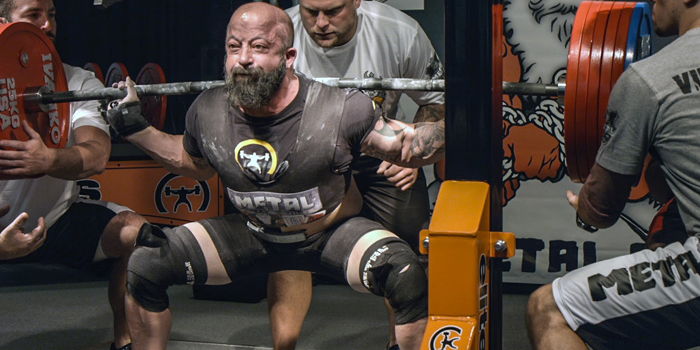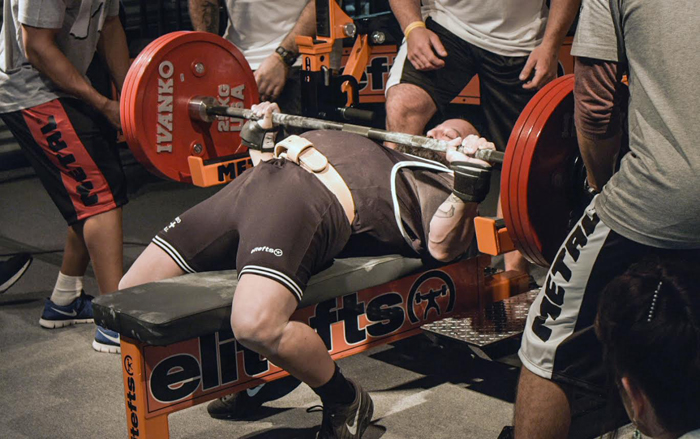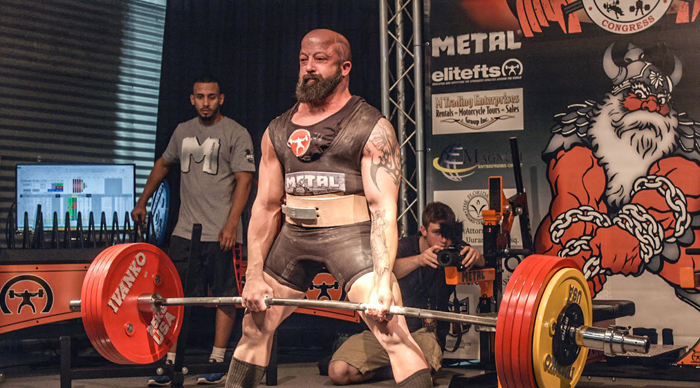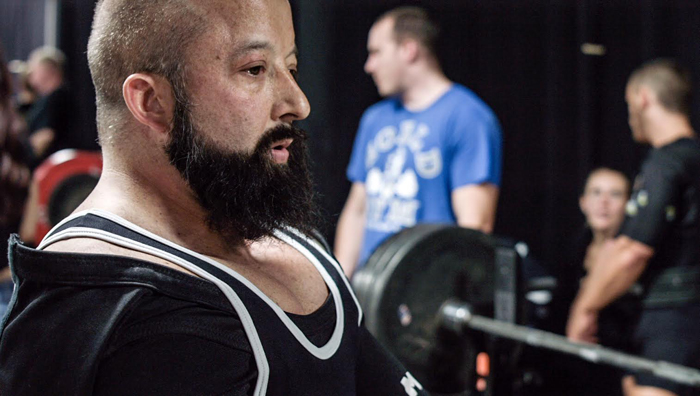
The sport of Powerlifting is more often misunderstood than not. I’ve been training clients for years who still think I’m training to step on stage or try to make it into the Olympics. This sport is hard enough to explain let alone train for. Powerlifting gyms are few and far between, so trying to find ways to train as a Powerlifter at a commercial gym can be more than difficult. I feel the powerlifts are based off the tried and true exercises of box squatting, board pressing, and rack pulls. How can you do these at a commercial gym without having the proper equipment? Well, I’m about to give you some options. So, put on your headphones and stop trying to explain what you’re doing. You’re a powerlifter. You lift for you, to improve on yourself, to make yourself the strongest you can be. Grab what you have available and start moving some weight!
The Minimalist Method was designed for raw lifters to accomplish the most possible utilizing the least number of sets and reps. It is essential training economy for maximal results. The main movements incorporate a gradually increasing range of motion (ROM) allowing for you to train with higher percentages while reducing your risk of injury followed by two or three accessory exercises focused on hypertrophy and balance. There is a 12 week program which is ideal for beginners or lifters who aren’t planning to compete who would like to incorporate the powerlifts into their strength training program. There is also a 16 week program for more advanced lifters which incorporates meet prep. The Minimalist, or M2, Method has been developed through years of trial and error with numerous other powerlifting programs. The guess work has been done for you. It has allowed for me to make steady progress over 20 plus years of competitive powerlifting without injury. It has also been proven to be effective by my many clients, both in person and online, and now by lifters who have been following the ebook worldwide. It is a no-nonsense practical approach.
The most common question I have been asked is how to use the M2 Method at a commercial gym. Not everyone has the convenience of having boxes for squatting, boards for benching, and blocks to pull off. I trained at a commercial gym for the first ten years of my powerlifting career where I had to make due with what was available. I remember stacking 45 lb plates to try to make a box to squat on. It took more work to do that than to squat! Here’s how you can learn from my experience to adapt and overcome in a commercial gym.
Squat Program 1
*Program 1 is ideal for lifters to learn or perfect their squat technique, who need to work on hip strength, or for those who may have knee issues due to excessive full range squatting. This would be the easiest M2 Squat program to incorporate at a commercial gym:
Week 1- High Box Squats (1” above parallel)
Week 2- Parallel Box Squats
Week 3- Full Squats
Squat Program 2
*Program 2 incorporates accommodating resistance with box squats through the use of chains and reverse bands, which are ideal for lifters who have weak lower backs or issues midway in the squat. Of course there aren’t many commercial gyms that are going to allow you to use chains, so this week is most likely out:
Week 1- High Box Squats
Week 2- Parallel Box Squats w/chains
Week 3- Reverse Band Full Squats
Squat Program 3
*Program 3 is ideal for lifters who need to work on depth, since it allows for them to squat to depth each week:
Week 1- Reverse Band Squats
Week 2- Full Squats w/chains
Week 3- Full Squats
The different program options are all interchangeable. If you want to box squat one week, but use reverse bands the next, then you can use program 1 on one week then programs 2 or 3 on the next.
No box for squatting? You have a couple of options.
A movable bench: Benches can almost always be found in commercial gym free weight areas. A bench can be used for either a high or parallel box, depending on your height. I actually used a bench for years when I trained at the Y before I had access to an adjustable squat box.
Aerobic steps: Steps can easily be stacked until the appropriate box height is reached.
Since box options should be readily available squat program 1 would be the easiest to follow at a commercial gym. If you’re looking for some variety and don’t mind investing in some bands you could perform program 1 on one week, then alternate by incorporating weeks 1 or 3 of programs 2 or 3 to with the use of reverse bands.
Similar to the squat, the basic M2 bench program is based off of a gradually increasing ROM.

Bench Program 1
Week 1- 3 Board
Week 2- 2 Board
Week 3- 1 Board
(Followed by full range rep work)
Bench Program 2
Week 1- 3 Board
Week 2- 2 Board w/chains
Week 3- 1 Board w/reverse bands
(Followed by full range rep work)
Optional Bench Program (performed on a 2nd bench day with at least two days between):
- Full Range Bench (removed from the other program)
- High Board rep work.
- Shoulder accessory work.
Okay, so you’ve got the idea, but you’ll need boards. If you have a training partner and someone to hold the boards, then your best bet and least expensive option is to go to a local home improvement store and have them cut boards for you. If you don’t, or your gym doesn’t allow for you to use them, then you have a couple of other options:
- Repboards
- Bench Blokz
- Towels: You could stuff these under your shirt, but you have to realize that they’re going to compress A LOT, so it may take a while to figure out how many you’ll need to reach the correct height.

Deadlift (Yep, same idea with the gradually increasing ROM. Simple, but effective)
Deadlift Program 1
Week 1- 4” Block pulls or rack pulls from just below the knee
Week 2- 2” Block pulls or rack pulls from mid-shin.
Week 3- Deadlifts off the floor
Deadlift Program 2
Week 1- 4” Block pulls or rack pulls from just below the knee
Week 2- 2” Block pulls or rack pulls from mid-shin w/chains
Week 3- Reverse Band Deadlifts off the floor
Deadlift Program 3
*For lifters who need to work on their strength off of the floor:
Week 1- Reverse Band Deadlifts off of the floor
Week 2- Deadlifts off the floor w/chains
Week 3- Deadlifts off the floor w/straight weight
No blocks to pull off of? Your easiest solution would be to have a power rack with safety pins that adjust to the right height as designated. If not, you still have other options to set the weights on to pull off of:
Bumper plates: We actually use bumper plates often at Orlando Barbell. They hold up well, lessen the noise, and don’t seem to damage the plates.
Regular plates: Regular plates may work as well, but they would be louder and may damage the plates, which your gym probably won’t appreciate.
Stall mats: If you have a tractor supply company nearby you could buy a couple of horse stall mats then cut them into about 2 x 2’ squares then stack them to the appropriate height. These would really be ideal, but they’re a bitch to cut and would be a pain to lug around. If you know someone who has a tool to cut them and the gym lets you store them there, then you’re golden.
These are just a few of the adaptations I have made over the years. During this time I was successful in breaking numerous world records and achieving a number one ranking. Training at a commercial gym shouldn’t hold you back from accomplishing your goals. Now you have some options for more exercises as well as the ability to get the M2 Method which details the ideal percentages and reps to follow. Regardless of where you train or what program you follow, stick to your goals and don’t ever let anyone tell you that you can’t accomplish them.
Photos courtesy of Tyler Marino of Nebula Productions










4 Comments